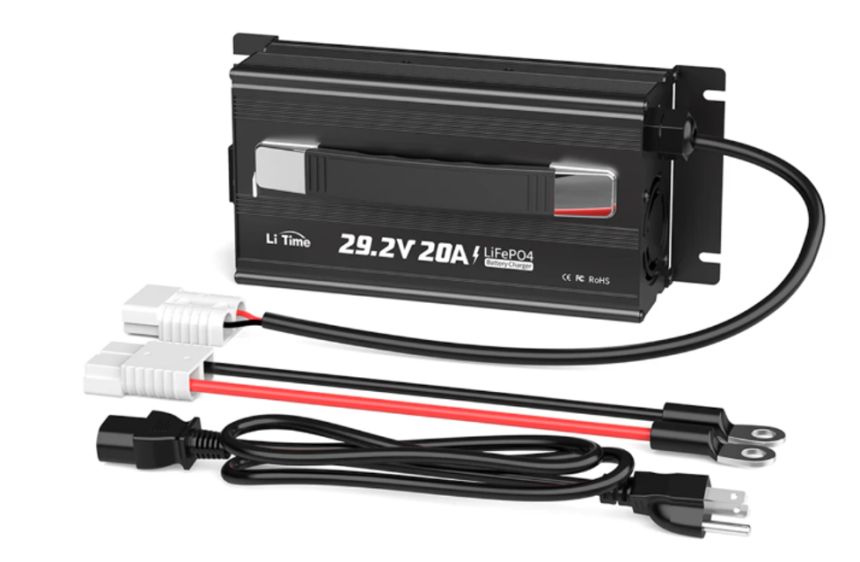Ever wonder why your 24 volt battery should be longer than it is? Proper charging can make all the difference. In this article, I’ll explain why charging these batteries is crucial and how it impacts their lifespan and performance.
Importance of Proper Battery Maintenance
Maintaining your 24 volt battery is critical for its longevity. I learned this firsthand when my boat’s battery consistently failed during trips. I discovered improper charging was the main issue.
- Longevity: Proper charging preserves battery life.
- Efficiency: A well-maintained battery delivers optimal power.
- Safety: Reduces risks of overheating or explosions.
Using a 24 volt battery charger sets the correct charging parameters, enhancing maintenance routines. Regular checks and avoiding overcharging can significantly improve performance.
Understanding 24 Volt Batteries
Understanding how 24 volt batteries work is crucial for getting the best performance and longevity out of them. These batteries are often used in various applications where higher power output is needed.
Common Applications and Uses of a 24 Volt Battery Charger
24 volt batteries are commonly used in several applications that demand significant power. Some typical examples include:
- Electric Vehicles (EVs): Often used in golf carts, e-bikes, and small scooters.
- Marine Equipment: Powering trolling motors and other marine applications.
- Renewable Energy Systems: Solar and wind energy storage systems.
- Industrial Equipment: Forklifts and electric pallet jacks.
These batteries are essential for applications requiring a reliable and consistent power source.
Once, I had a 24 volt battery in my golf cart. Improper charging caused it to die unexpectedly during a game. A proper 24 volt battery charger would’ve prevented this by maintaining the right charge.
Proper charging with LiTime helps prolong battery life, improves performance, and avoids inconveniences like my golf cart failure. These batteries are versatile but must be correctly maintained to stay effective.
Proper Charging Techniques
Effective charging keeps 24 volt batteries in top shape. Following recommended practices prevents premature battery failure.
Recommended Charging Voltages
Charging a 24 volt battery requires adhering to specific voltage settings to avoid damage.
- For bulk charging: Set the voltage to 28.8-29.4V.
- For float charging: Maintain voltage between 27.0-27.6V.
- Monitor temperature as it impacts charging.
Using these voltages extends battery life and ensures efficient operation.
Importance of Using a Compatible Charger
A compatible 24 volt battery charger is crucial. I used an incompatible charger on my e-bike, leading to overheating and battery damage. The right charger prevents such mishaps and ensures proper voltage settings.
- Prevents Overcharging: Stops charging at the correct voltage.
- Enhances Lifespan: Keeps battery cycles optimized.
- Safety: Reduces risk of fire and damage.
Always choose a charger specified for your battery’s chemistry and voltage.
Risks of Improper Charging
Charging 24 volt batteries improperly leads to serious issues. Here are the major risks associated with overcharging and undercharging.
Overcharging and Its Impact on Battery Life
Excessive charging damages the battery. It causes overheating, which degrades the internal components. Overcharging reduces battery life and, in extreme cases, can make the battery swell or leak.
A compatible 24 volt battery charger with an automatic shut-off feature helps prevent overcharging. I once forgot to use an automatic charger on my RV’s 24 volt battery, and it overheated, causing significant damage.
Effects of Undercharging
Not fully charging a 24 volt battery also has negative consequences. Undercharging prevents the battery from reaching full capacity, causing sulfation on the plates and reducing efficiency. The battery then fails to deliver sufficient power for applications.
Consistently using an appropriate 24 volt battery charger helps avoid undercharging. A friend of mine undercharged their boat’s battery, and it couldn’t start the engine during a fishing trip—ruining the day.
Best Practices for Charging 24 Volt Batteries
Proper charging practices for 24 volt batteries can significantly improve performance and longevity. Let me share essential tips for charging your batteries correctly.
Optimal Charging Environments
Charging 24 volt batteries in the right environment is crucial for their health. Avoid exposing batteries to extreme temperatures, as it can impact their efficiency. I keep my charging setup in a well-ventilated, cool room to maintain safety and performance. Charge batteries in a location free from moisture and direct sunlight.
Avoiding Deep Discharges
Preventing deep discharges extends battery life. Discharge depth below 20% can harm battery health. I once let my 24 volt battery drain completely, and it never held the same charge again. A 24 volt battery charger with a built-in monitor helps track charge levels and avoid deep cycles.
Monitoring Battery Health
Properly monitoring battery health is essential for extending the life of your 24 volt batteries. Regular checks prevent both overcharging and undercharging, which can damage the battery.
Regular Inspection and Maintenance
Regular inspection helps catch potential issues early. I check my 24 volt battery setup weekly:
- Inspect for any corrosion on terminals.
- Verify connection tightness.
- Measure the voltage with a multimeter to confirm levels are within the correct range.
- Cleaning terminals with a baking soda solution prevents buildup and ensures better conductivity.
Use of Battery Management System (BMS)
Battery management system (BMS) offer efficient ways to monitor and control charging. I installed a BMS in my setup, which has features like:
- Real-time monitoring of voltage and current.
- Protection against overcharging and deep discharges.
- Automated balancing of cells for optimal performance.
A 24 volt battery charger with built-in BMS capabilities simplifies maintenance and ensures consistent battery health.
Conclusion
Proper charging of 24 volt batteries is crucial for their longevity. Using a 24 volt battery charger with precise voltage settings can prevent common issues. Once, I accidentally overcharged a battery because I skipped checking the charger settings. That experience taught me the importance of vigilance. Always monitor and maintain your batteries to get the best performance.
Lynn Martelli is an editor at Readability. She received her MFA in Creative Writing from Antioch University and has worked as an editor for over 10 years. Lynn has edited a wide variety of books, including fiction, non-fiction, memoirs, and more. In her free time, Lynn enjoys reading, writing, and spending time with her family and friends.















